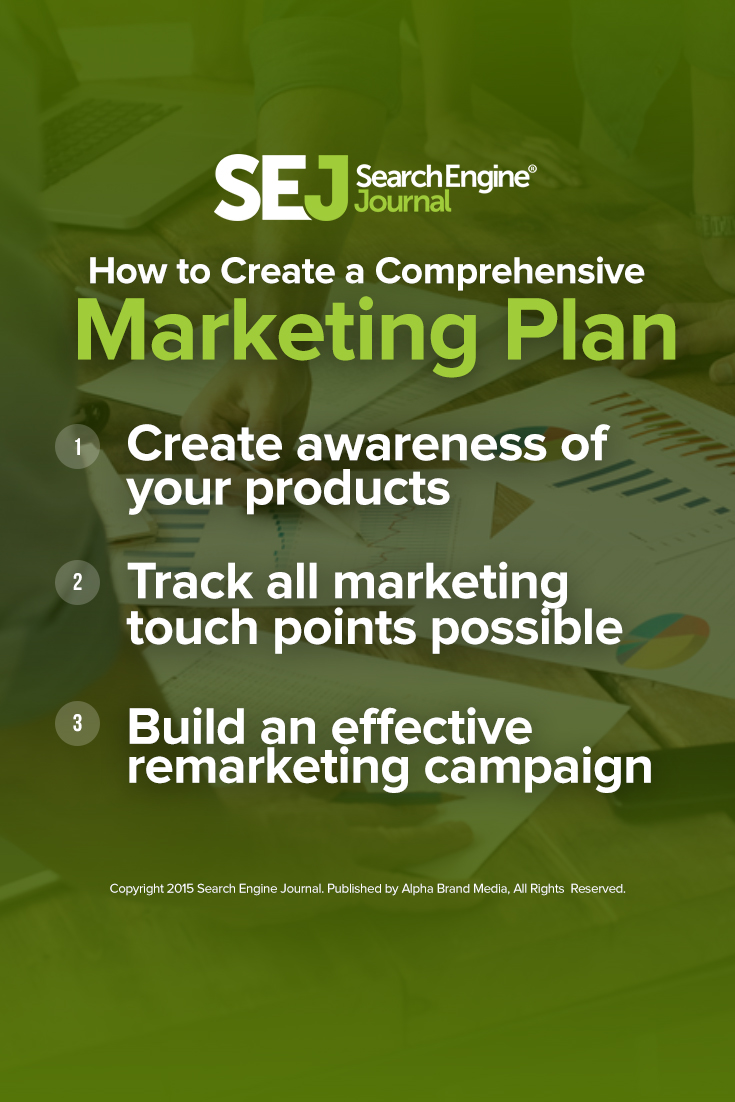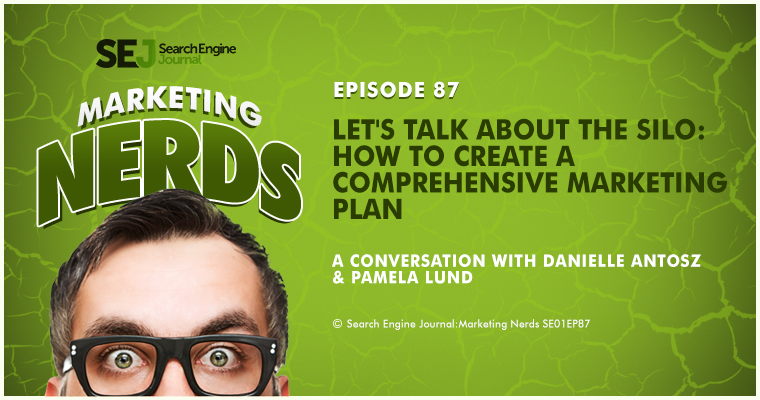Podcast: Download
Subscribe: Apple Podcast Google Podcasts Spotify
Visit our Marketing Nerds archive to listen to other Marketing Nerds podcasts!
In this episode of Marketing Nerds, Features Editor Danielle Antosz sits down with Pamela Lund of That Pam Chick to talk about creating a comprehensive marketing plan. Pamela shares how to get started when working on a new brand, how to help your CEO understand ROI that can’t be seen right away, and how to track as many marketing touch points as possible.

Here are a few transcribed excerpts from their discussion, but make sure to listen to the podcast to hear everything:
On Shifting the Marketing Conversation
Like you said, integrating different aspects is not necessarily a new concept, but the way that we’re talking about it [marketing] and the way we need to educate people is changing a little bit. Previously, we would say, “We need to share keyword information or add copy with the SEO teams.” but they can implement that on the organic side.
The discussion that I’m having with new clients, and even existing clients, is about shifting their strategy a little bit. There’s only so many people who are actually going to go to Google and search for their product. People may not even know that their product exists.
If we really want to maximize revenue and get as much as possible out of their marketing spend, we have to do things to create demand which would be awareness through Facebook ads that you upfront know are not going to be ROI positive. They’re going to generate quality traffic, but people aren’t going to click-through and buy right away. We’re just really introducing them to the brand.
Through that, you may want to do an e-mail strategy or just a retargeting strategy if you know you are bringing people to the site, you can bring them back later.
Everything really just needs to come down to letting people know about your brand. Creating awareness of your products, and then when they are ready to buy, being there and having them already warm to your brands so that your conversion rate is higher.
How to Help Execs Understand the Value of Campaigns Without Immediate ROI
I take a two-step approach. One is I talk to people about how they personally have been shopping. I ask them to think of recent purchase they made and then to think back to how they got to making that purchase. This is something they wanted to purchase, like a luxury item or something. A new pair of shoes maybe that they purchased online.
I take them back through their process and I say, “Think about when you first started considering making this purchase.” They will talk to me about how they searched on their mobile phone and they found something that they liked and then their kids ran into the room, and they got disrupted. Later on that week they were like, “Oh, yeah. I really like those shoes.” They have to go back and find the shoes and then maybe they signed up for the e-mail list because they were offered 10% off if they do that.
They sign up for the e-mail and then maybe next week they get another e-mail from the brand and then they finally purchase. When you put them in the position of being the buyer, they start to realize, “Oh my gosh! I do this all the time. So why wouldn’t my customers also do this?”
We have to start talking about the multi-channel funnels and what tracking they have in place and making sure that they have a comprehensive program that is bringing people into their funnel, getting them signed up for an e-mail list. Doing the retargeting.
While they may not see positive ROI on the first click, we can show that ROI is positive overall.
Tracking All Touch Points
It’s really tough to 100% track everything. Everybody complains about e-mail, but at the end of the day, if you look at most company’s stats, if they have a good e-mail program, that is one of their largest revenue drivers.
We do make sure that everything is tagged with UTM parameters and then look at the multi-channel funnel in analytics or mixed panel or whatever your tracking platform is that you’re using.
Our shopping behavior is not one step or one device or one touch point. We have to use it as an indicator rather than a solid metric and say, “We generated $10,000 in revenue here.” What we need to do is look at it and say, “The more attention we pay to social advertising, the more traffic we bring in, the more retargeting revenue we’re generating in. Overall, our entire graph is trending up.”
How to Do Remarketing Right
People do get a little creeped out by it and all of us I think in marketing lovingly call it stalking, because it definitely is. When done well, it’s so effective.
I think the big problem is that so many companies do not do it well. They’re retargeting everyone with the exact same ads. There’s no intent behind the retargeting, and there’s no strategy behind it. One of the most effective things you can do is implement a retargeting strategy that puts people into buckets.
As you know, these people took this action on our site just like you would do with an e-mail campaign. You need to make sure you’re showing them the right offer at the right time so that they will convert.
What Lies Ahead for Remarketing
I think I see two major things that will change. One is really getting back to the intent and the intelligence behind the retargeting. For instance, those boots you mentioned. If you looked at those Doc Martens and you knew you wanted to purchase them and then you didn’t. We need to determine why you didn’t purchase those. Was it a price issue? Was it that they didn’t have the color you wanted? What was the reason that you didn’t make that purchase?
The other side of that is getting more platforms that have better ad selections. Right now, we either have dynamic ads which we’re using a product feed and we’re just putting in all of the products and whatever images the client has available and throwing their prices in there, or we have static banners that are not necessarily timely or even related to the product that you are looking at.
How Videos Work in the Digital Marketing Scene
That’s a pretty difficult topic right now just because the professional video most brands want to do is still a little bit inaccessible. To produce a video that has value to the users but then also ends up generating revenue. That’s a really hard sell. That’s not something that I have had a lot of success with clients doing.
What we’ve started doing is using those platforms, like Instagram video, to let users see how the brand works behind the scenes.
Those types of videos are really easy for them to do. There’s not a lot of production. They can just shoot what they’re already doing and it’s not something that requires sound or subtitles or anything that would make the video usable for an ad.
To listen to this Marketing Nerds Podcast with Danielle Antosz & Pamela Lund:
- Listen to the full episode at the top of this post
- Subscribe via iTunes
- Sign up on IFTTT to receive an email whenever the Marketing Nerds podcast RSS feed has a new episode
- Listen on Stitcher
Think you have what it takes to be a Marketing Nerd? If so, message Kelsey Jones on Twitter, or email her at kelsey [at] searchenginejournal.com.
Visit our Marketing Nerds archive to listen to other Marketing Nerds podcasts!
 Image Credits
Image Credits
Featured Image: Image by Paulo Bobita
In-post Photo: Georgejmclittle/Shutterstock.com





